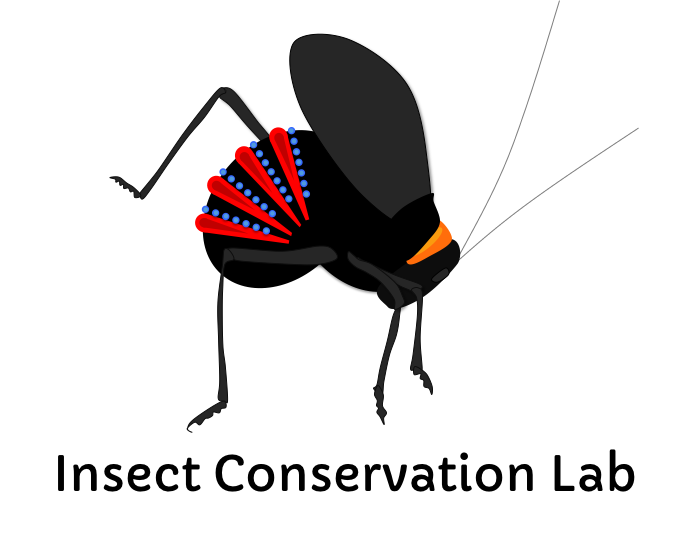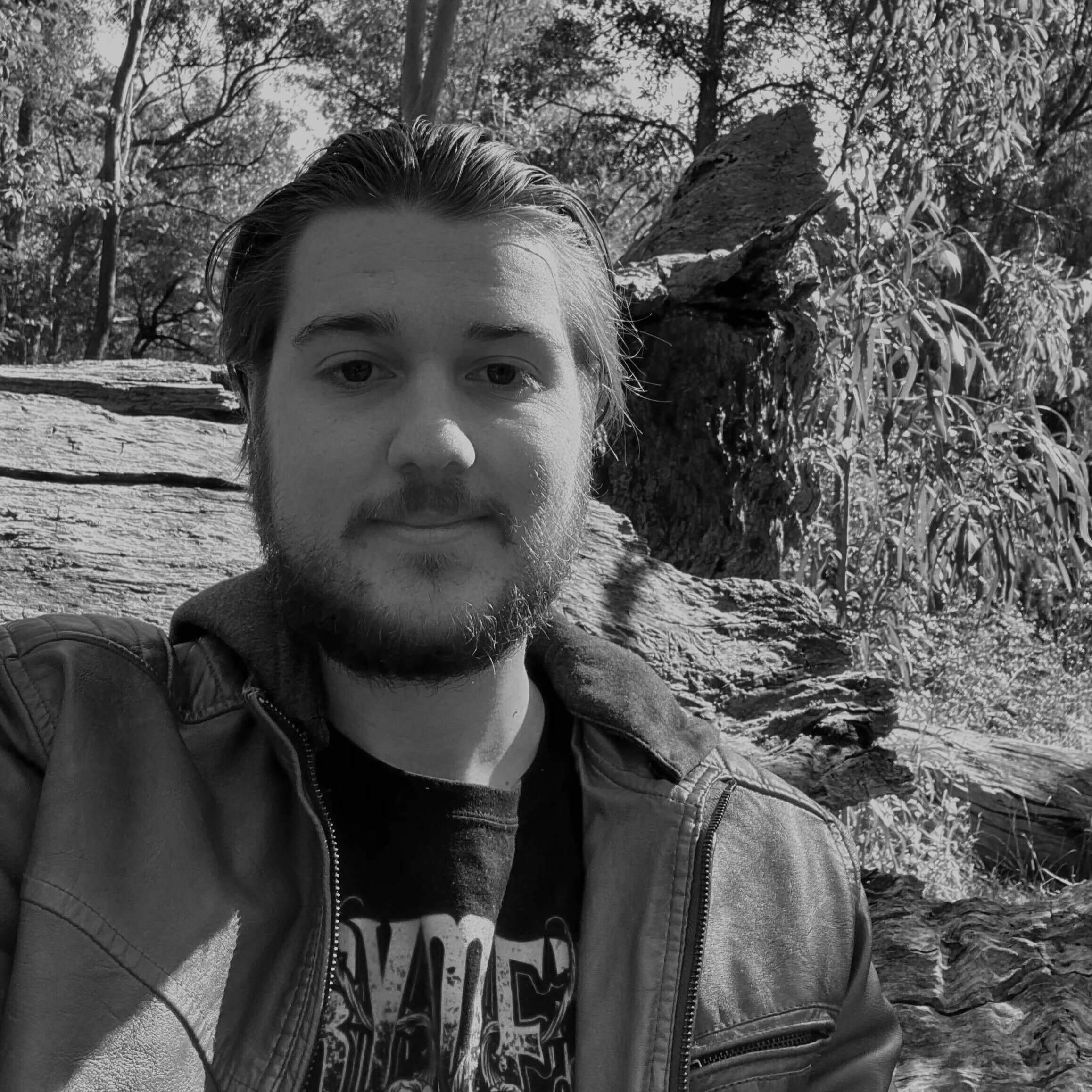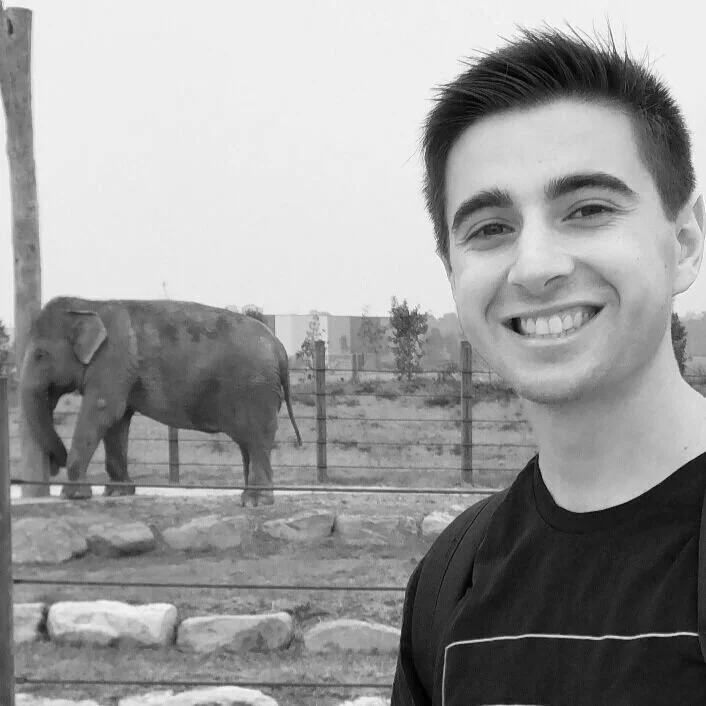Current Lab Members
Eleanor as a fierce butterfly hunter
Eleanor Drinkwater
Postdoctoral Researcher - Western Sydney University 2024-2028
Eleanor is back as a big cheese postdoc! She is focused on determining the distribution and migratory flyways of Bogong moths. As usual, she is bursting with excitement.
Research Assistant - Western Sydney University 2016
Eleanor loves investigating the big questions of behavioural defence from the physically small but brilliantly complex level of invertebrate behaviour. Based in Kosciuszko National Park, she and Julia Ryeland teamed up to investigate how the colouration and display of the mountain katydid provides protection from predators. To do this they studied the interaction between the katydid display and the predatory response of wild Australian magpies. In addition to invertebrate defence, Eleanor is also fascinated by network analysis the topic of her PhD on collective personality in ant colonies at the University of York which she started soon after she visited our lab.
James Roberts is developing a Conservation Toolkit for terrestrial snails. He combines expert insights with practical, low-cost solutions to address threats such as invasive species, habitat loss and climate change. His work is highly collaborative, partnering with museums, zoos, land managers and communities to ensure every tool is practical, adaptable and community-focused.
PhD Student – Western Sydney University 2021 - 2025
Norfolk Island land snails face the four factors of being species-rich, mostly endemic, poorly understood and threatened by human impacts. Working with museum, zoo, industry and land managers, Junn is studying the ecology and population genetics of the island’s land snails, with a hope to bring them a few steps back from the brink of extinction.
Hannah, well defended.
Hannah Smart
PhD Student – Western Sydney University 2020 - 2025
Hannah’s PhD project looks into the murky world of antipredator defenses that are deployed once prey have been discovered. Many ‘secondary defences’ are poorly understood so Hannah will be well inside uncharted territory. The exciting potential of Hannah’s project is further escalated by her ‘the weirder the better’ attitude. Follow Hannah on twitter for dispatches!
Connor just back from visiting termites
Connor Marsland
PhD Student - Western Sydney University, 2024 - 2027
What do Bogong moths do in the mountains and how do they get there? Connor is on the case!
Masters Student - Western Sydney University, 2023
Connor is being bedazzled by spots and stripes and blocks and warnings. What IS the deal with stripes?
Past Lab Members
Rosie enjoying the Australian spring!
Rose Lownds
Undergrad Intern - Western Sydney University and University of Cardiff, Wales, 2019 - 2020,
Supervisor: Kate Umbers
Bogong moths are famous for their return-trip migration to the Australian high-country to escape the summer heat…but what will this mean for them as the alps heat up with climate change?
Rosie knows!
James doing his beetle thing.
Dr James Bickerstaff
Postdoctoral Researcher – Western Sydney University, 2020 - 2022
James has joined the team to apply his considerable molecular skills to the population genetics of Acripeza (the mountain katydid). With the wonderful help of museum curators and collections staff across the country, he is extracting DNA from legs of pinned katydids collected from the entire east coast of Australia.
Liisa and a friendly magpie
Postdoctoral Researcher – Western Sydney University, 2021-2023
How do predators learn and remember deimatic behaviour? Liisa is asking the magpies and they are keen to answer.
Stephanie with Bam Bam the dingo!
Stephanie Williams
Undergraduate Field Project Student – Western Sydney University, 2021
Stephanie did a project in insect conservation in Australia’s high elevation regions, how do fluctuating winter temperatures influence grasshopper egg diapause and development?
Brandon, gone bush.
Brandon Long
Research Assistant - Western Sydney University, 2020 - 2021
Which Australian invertebrates should we prioritise for conservation and which were impacted by the fires of Australia’s Black Summer? Brandon tackled this massive question for an undergraduate project which turned into an ongoing project on which he is now employed as a research assistant.
Jack with a tiny elephant.
Jack Banks
Undergraduate Project – Western Sydney University, 2020
Supervisor: Kate Umbers
How are invertebrates faring in response to the Blue Mountains fires? Jack’s project compared biodiversity in burnt and unburnt sites.
Alex and the world's biggest* tree fern.
* unsubstantiated
Alex Barley
Master of Research student – Western Sydney University, 2018 - 2019
Supervisors: Dr Kate Umbers, Prof John Hunt
Stemming from a love of visual arts, Alex is interested in predator-prey interactions and what role patterns and colours play in them. They are currently looking at just what components make these displays effective at deterring predation using the masters of visual ecology, bugs! Through this, they hope to better understand the evolution of eye-catching animals like mantises and, of course, the mountain katydid.
Elephant (left) and Brendan (right)
Brendan Baker
Master of Research student – Western Sydney University, 2018 - 2109
Supervisors: Dr Kate Umbers, Dr Emily Burdfield-Steel, Dr Clarissa House
Brendan seeks to understand how chemical defences keep invertebrates safe from their predators. He investigates the toxins secreted by the aposematic mountain katydid, and how a potential predators’ experience of tasting this foul-tasting cocktail discourages them from returning for a second meal!
Julia with Acripeza reticulata (mountain katydid) her favourite animal in the world beside emus.
Julia Ryeland
PhD Student – Western Sydney University, 2016 - 2020
Supervisors: Dr Ricky Spencer, Dr Kate Umbers and Dr Clarissa House
Julia's PhD project investigates the mating system of the humble emu!
Visit Julia's website: http://juliaryeland.weebly.com
Lookout!
Jodie Gruber
Postdoctoral Research Associate – Western Sydney University, 2019
Dr Gruber specialises in animal cognition and is therefore an integral part of the team focused on startle displays. She completed her PhD at University of Sydney with Rick Shine and was co-supervised at Macquarie University by Martin Whiting taking a comparative approach to understanding learning and memory in cane toads from populations across the world. I know, so cool.
Sonu in the field!
Sonu Yadav
PhD Student 2016 - 2019
Macquarie University
Supervisors: Dr Rachael Dudaniec and Dr Kate Umbers
Drivers of landscape genetic patterns and environmental adaptation in Australian grasshoppers'
Sonu commenced her PhD in August 2016 and is investigating the role of genetic adaptation, landscape connectivity and environmental variables in determining species’ ranges and phenotypic traits along latitudinal and elevational gradients using genomic data.
Tom wearing a hat!
Tom White
Postdoctoral Researcher – Western Sydney University, 2016 - 2017
Tom was on board for a katydid bonanza. The endless exciting questions, experiments and data on mountain katydids kept him busy over the 2016-2017 in addition to his main role at Macquarie working on butterfly schmutterflies. Tom moved on to become a big cheese lab leader at The University of Sydney - check out the awesome Evolutionary and Sensory Ecology Lab here!
Bec and a baby Jacky!
Rebecca Pacey
Honours Student 2017
UNSW
other supervisors: Dr Lisa Schwanz and Dr Julia Riley
Bec's project was on the heritability of colouration in lizards. I know, a damn cool honours project. Yes finished with first class honours and is now onto world domination via a PhD at UNSW with Lisa Schwanz and co supervised by Martin Whiting from Macquarie University.
Griffin when he's not making coffee at Richmond Records
Griffin Taylor-Dalton
Research Intern – Western Sydney University, 2015]
In addition to being involved in the corroboree frog model project looking coloration of the frogs and how this correlates with their likelihood of being attacked by predators, Griffin worked on several aspects of red-crowned toadlet biology. Griffin moved on to a environmental consulting job, who knows where that will take him!
Tonya looking at pickled specimens 10 years ago (from here)
Dr Tonya Haff
Part-time Postdoctoral Researcher – Western Sydney University, 2014 - 2017
Tonya joined a project lead by Kate and Prof Johanna Mappes (University of Jyväskylä, Finland) to work on the survival value of the mountain katydid's defensive display. Tonya's extensive expertise in avian biology made her a critical collaborator on the project. Tonya is well-known for her research on white-browed scrub wren communication, championing and editing the second edition of The Natural History of UC Santa Cruz Campus, and her awesome taxidermy skills. Tonya moved on to work at the Australian National Wildlife Collection.
Niki wearing a bee suit, not her usual attire for taking photos of lizards
Niki McCarthy
Research Intern– Western Sydney University & UNSW Sydney, 2015
co-supervisor: Dr Lisa Schwanz
Niki likes all creatures great and small. Combining the two, Niki worked with Kate and Dr Lisa Schwanz from UNSW researching inheritance patterns and colouration in Jacky Dragon lizards. This involved taking hundreds of photos of baby lizards, hopefully getting their good side each time! Niki moved on to pursue the farm life in South Australia.
Michael wearing his favourite shirt
Michael Kelly
Research Intern – Western Sydney University, 2015 - 2016
The visually spectacular Southern corroboree frog (Pseudophryne corroboree) is currently listed as critically endangered on the IUCN Red List. Michael helped work on understanding predator behaviour and learning processes associated with the function of the corroboree frog's colour pattern. Michael and Griffin (above) made a unmentionable number of clay model frogs for field experiments! Michael moved on to Marie Herberstein’s Lab at Macquarie University to complete a MRes.
Jordyn enjoying pipetting katydid regurgitate
Jordyn Crossley
Summer Research Scholar – Western Sydney University, 2016
co-supervisor: Dr Ben Moore
Jordyn's project investigated the relationship between Senecio pyrrolizidine alkaloids (PAs) and their sequestration in the mountain katydid, a brightly coloured insect that preferentially eats Senecio. It is assumed that the katydid's colouration warns potential predators of their unprofitability, but whether and to what extent the katydids sequester PAs is unknown. To get to the bottom of this, Jordyn analysed the composition of the plants, the katydids and the katydids' defensive secretions (katydid vomit!). Jordyn moved on to work in vet sciences.
Giselle with Tachyglossus aculeatus (short-beaked echidna) near Jindabyne, NSW
Giselle Muschett
PhD Student 2013 - 2016
Macquarie University
other supervisor: Prof Marie Herberstein
Giselle's project was on the Kosciuscola alpine grasshoppers at Macquarie University in the Herberstein Lab, co-supervised by Kate. Giselle worked on the evolution of fighting behaviour in this strange genus of orthopteroids using comparative behavioural methods to unravel what these grasshoppers are fighting for. Giselle, Marie and Kate are collaborating with Hojun Song at University of Central Florida, Nikolai Tatarnic at the Western Australian Museum. Giselle's masters research investigated manatee distribution and habitat use via aerial surveys and is well-known in central America for her book: An illustrated field guide to the birds of Panama. Giselle moved home to Central America and landed a job as a wildlife officer in the aviation world.
JP's epic selfie
JP Lawrence
2016 Endeavour Research Fellow
University of Mississippi
Project Description: Bright coloration of highly toxic animals is a classic problem in evolutionary biology. Neotropical poison frogs have propelled our understanding of the conspicuous coloration evolution and provided textbook examples. The Australian poison frogs (Pseudophryne), however, have received little research attention. Pseudophryne are all toxic, often brightly colored, and endemic to the coastal Australia. This conspicuous coloration is thought to signal would-be predators warning them of toxicity. Pseudophryne are unique among frogs for synthesizing their own toxins and sequestering toxins from invertebrate prey. Although limited, evidence suggests that Pseudophryne can counterbalance these sources. Smith et al. (2002) found that P. semimarmorata are capable of producing and up-regulating toxins when dietary sources of toxins are lacking. This suggests that Pseudophryne maintain their toxicity level, which has implications for whether predators can predict toxicity risk associated with coloration.JP returned to the US to complete his PhD and then moved on to the Monteiro Lab at the National University of Singapore.
Seba chillin' on the steps of the Colosseum, thinking about katydids
Sebastiano De Bona [@sebadebona]
Visiting Field Assistant – Western Sydney University, 2015
University of Jyväskylä, Finland
As an expert on deimatic displays, Sebastiano (Seba), visited us to conduct experiments on mountain katydid project. Seba and Kate spent many, many hours in the Snowy Mountains and emerged with some wonderful datasets. Seba's clever experimental design ideas and wonderful skills in the kitchen make him an awesome field buddy. After his epic Australian adventure, Seba returned to central Finland to begin his PhD on Trinidadian guppies with Andres Lopez-Sepulcre (Unviversity of Jyvaskyla, Finland), and hopes one day to revisit the mountain katydids to continue to uncover their secrets.
Brighton with Ailurus fulgens (red panda)!
Brighton Downing
Honours Student 2015
University of Western Australia
co-supervisor: Dr Nicki Mitchell
Project Description: It is generally assumed that the conspicuous acoustic signals made by anuran males are their primary mode of communication. However, acoustic signals carry many costs. Additionally, some species call from cryptic locations and thus, localisation of mates may be aided by chemical cues. Among anurans, evidence of chemical communication for mate choice is scarce, but preliminary evidence suggests that chemical cues regulate reproductive behaviours. Thus, Brighton is working to determine whether female Crawling Frogs (Pseudophryne guentheri) are capable of assessing male qualities via acoustic as well as chemical cues in addition to whether females preferentially utilise acoustic or chemical cue to localise preferred mates.
James measuring spectral reflectance from ultraviolet to near infrared
Dr James O'Hanlon
Part Time Research Associate 2014 - 2015
Macquarie University & University of Wollongong
James' model making prowess is second to none and he joined the team looking at defensive colouration in Australia's poison frogs (Pseudophryne). James' beautiful frog models are used in large scale experiments to delve further into the behavioural ecology of these toxic little toadlets.
James was part of the team working on the function of colour change in Kosciuscola. James visited Devi Stuart-Fox at the University of Melbourne to make spectral reflectance measures of grasshoppers across the visual and near infrared spectrum and together we're building these data into a thermal tolerance model for Kosciucola. James is better known for his awesome work on the orchid mantis and other mantises to boot. Find out more about James' research here.
The front of Ainsley's head
Dr Ainsley Seago
Part Time Research Associate 2014
Macquarie University & University of Melbourne
Ainsley joined team grasshopper as an expert in lucid key construction. Her mission was to work up a lucid key for the Praxibulini (Acrididae) using the power of computers. Ainsley is best known for her taxonomic work on beetles, her fascination with how they produce their colours and her illustrative genius. Find out more about her here on her blog: trufflebeetles.com, here for drawing: beetlesink, and here for her life as a new mom: operationbabyhave.
Steph preparing for some time in the microscopy lab
Stephanie Wilson
Part Time Research Associate 2014
Macquarie University
Steph was working in the Macquarie University Microscopy Facility to image temperature-dependent colour change across the Kosciuscola genus. With James' Irish heritage, Scott's red hair and Steph visiting from Scotland, this project has become a genuinely celtic affair. Steph has picked up where Scott left off (to start a postdoc in Brasillia), continuing with ultramicrotome slicing and dicing for TEM.
Scott preparing grasshoppers for transmission electron microscopy
Dr Scott Fabricant
Part Time Research Associate 2014
Macquarie University
Scott was the microscopy contingent of the Kosciuscola colour change team and carried out some SEM and TEM analysis. Scott worked in the Macquarie University Microscopy Facility to image temperature-dependent colour change across the genus. As of 2014, Scott is best known for his research on coloration and aposematism in the harlequin bug, especially regarding the role iridescence in deterring predators.
Brianne at Lake Cootapatamba, Kosciuszko National Park
Brianne Messer
Biological Sciences Summer Scholar 2012 - 2014
Macquarie University
2013 / 2014 project - The alpine katydid (Acripeza reticulata) has a remarkable anti-predator display. Brianne helped quantify the toxicity of A. reticulata in relation to the intensity of its colourful display.
2012 / 2013 project - Animals of the blue layer live in oceanic surface waters and wash up on beaches all over the world. They wash up onto Sydney beaches after a few days of prevailing easterlies. Brianne and I were describing the colour of the many hydrozoan and molluscan members of blue layer and thinking about why they are all blue.
Peter collecting data in Kosciuszko National Park
Peter Mahoney
Honours Student 2012
Macquarie University
co-supervisor: Prof Marie Herberstein
Peter's project investigated the role of thermochromy (temperature controlled colour change) in signalling fighting ability in the male chameleon grasshopper (Kosciuscola tristis). He measured the colour and temperature of grasshoppers in the field (near Thredbo, NSW) and compared it to the maximum brightness grasshoppers could achieve when warmed up to 30°C. He then fought matched and unmatched pairs of grasshoppers testing classical hypotheses in antagonistic escalation.

































